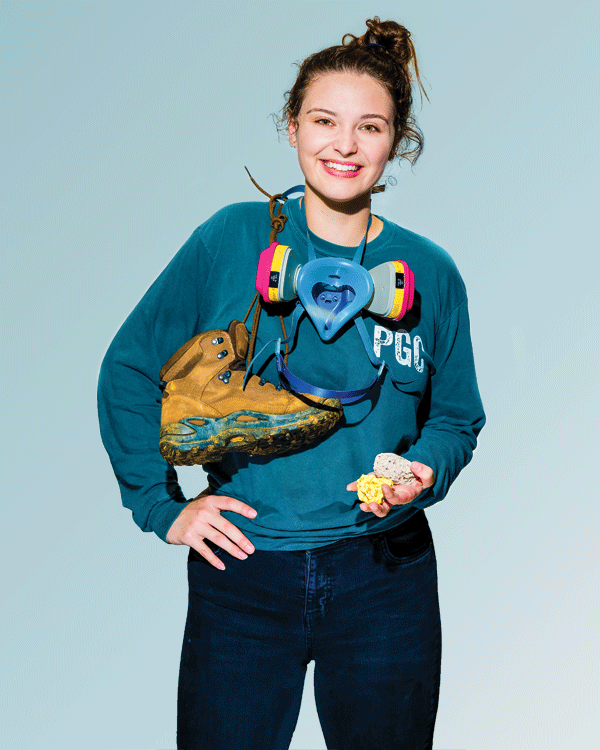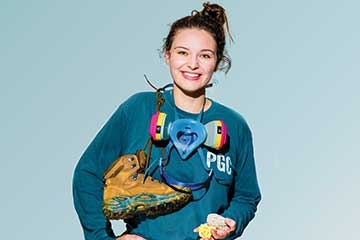
Photo by Jeff Fusco
1. Hiking Boots
2. Rocks
3. Gas Mask
Emily Carey
BS Geoscience ’20
The Co-Op
My second co-op included a month of field work at Mount Sinabung, a volcano on the Indonesian island of Sumatra, with a team led by Dr. Loÿc Vanderkluysen, a volcanologist in the Department of Biodiversity, Earth and Environmental Science. Our goal was to test the use of modern technology, like drones and cameras, in volcanology, a field that has historically used collecting methods that date as far back as the 1800s. Our team evaluated the possible use of drones to collect time-of-eruption ash samples from volcanoes. We also collected remote photographs of gas coming from the volcano to better understand the rate at which it is releasing gas.
The Takeaway
This was a life-changing experience for me. I had never spent so long living abroad nor even been to Asia. I got to meet people different from myself, and I loved it. It’s made me want to travel more. It cemented my love for geology. As someone who loves science, but also loves art and looking at the world through a creative lens, geology is a beautiful melding of so many different concentrations, thoughts, ideas and disciplines. It was a great thing for me to be able to merge all these together in one co-op.
The Objects
These are some rocks I collected. One is pumice from near Mount Sinabung that originated from Toba, a volcano many kilometers away. And these are pieces of sulphur from the Ijen volcano complex, which supports a centuries-old sulphur mining industry. My gas mask was mandatory for field work around Ijen — the particles from the ash plume are dangerous to breathe. From my work at Ijen, my hiking boots smell like rotten eggs. They stay in a bag in the lab, because I don’t want them stinking up my house.


